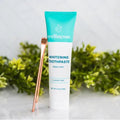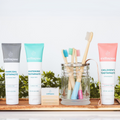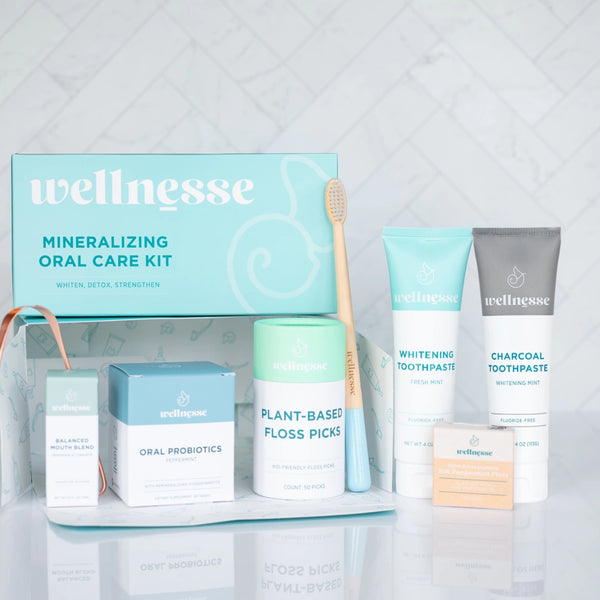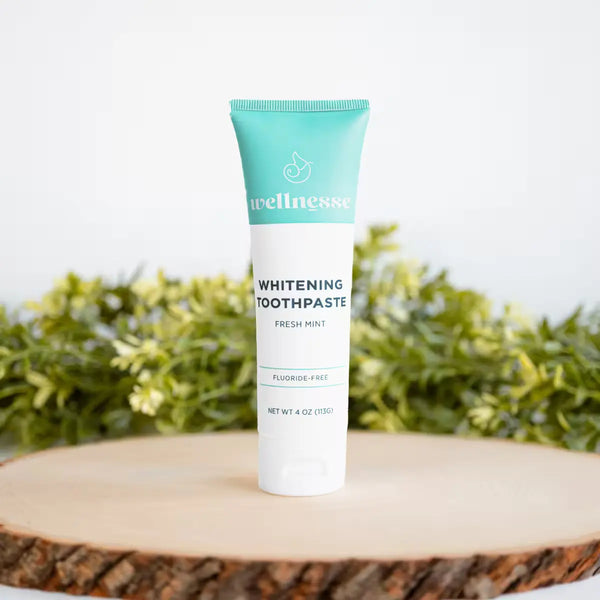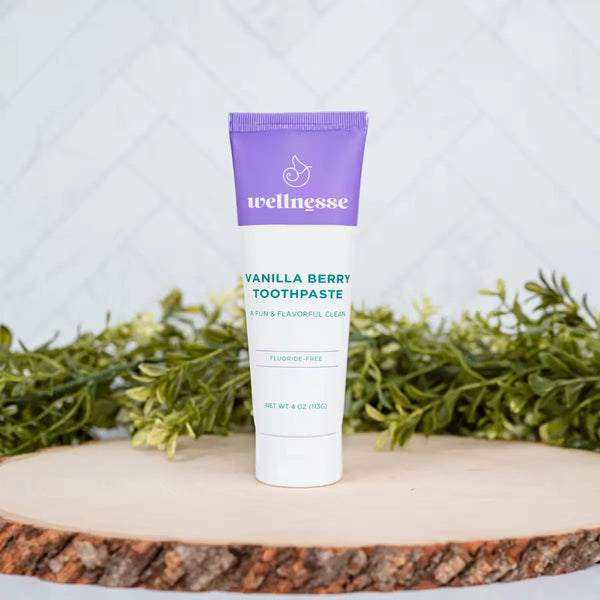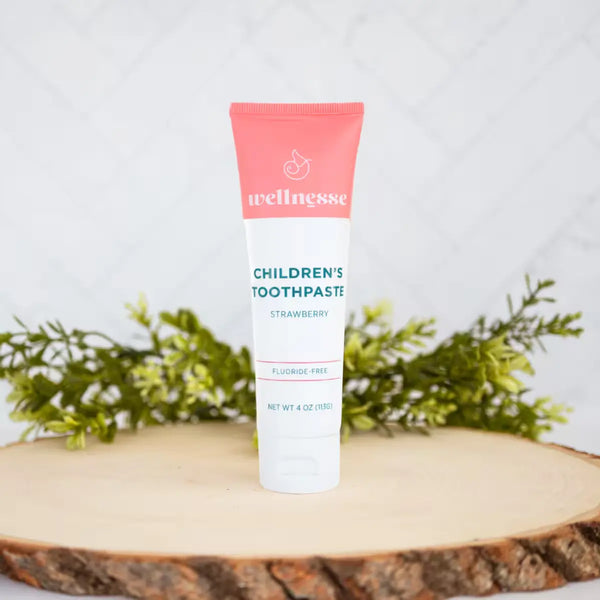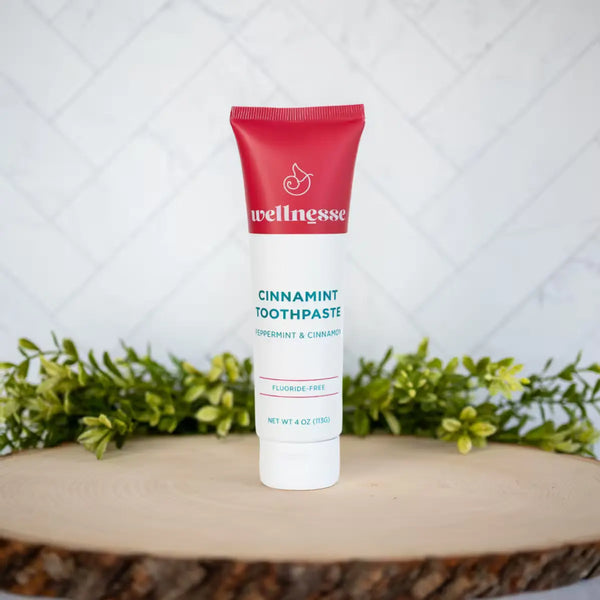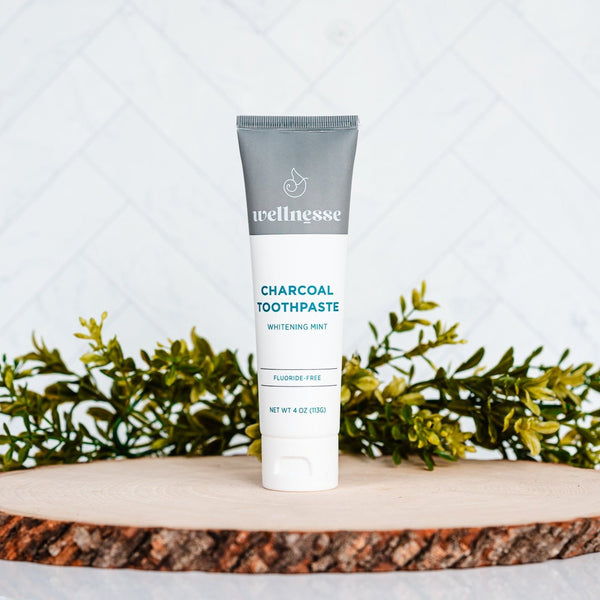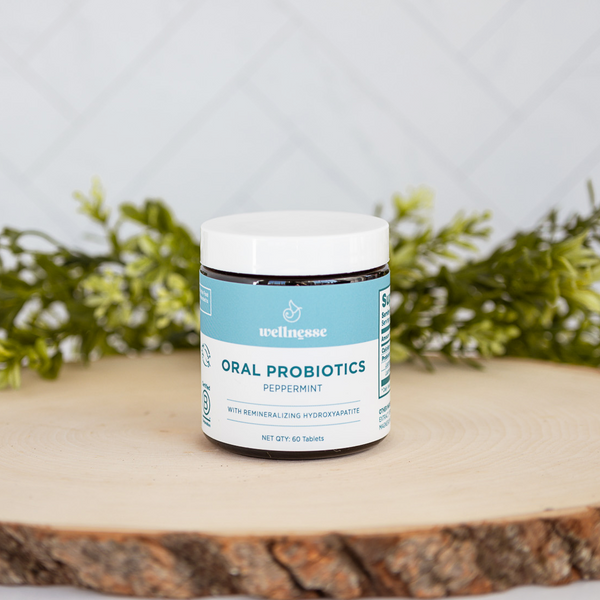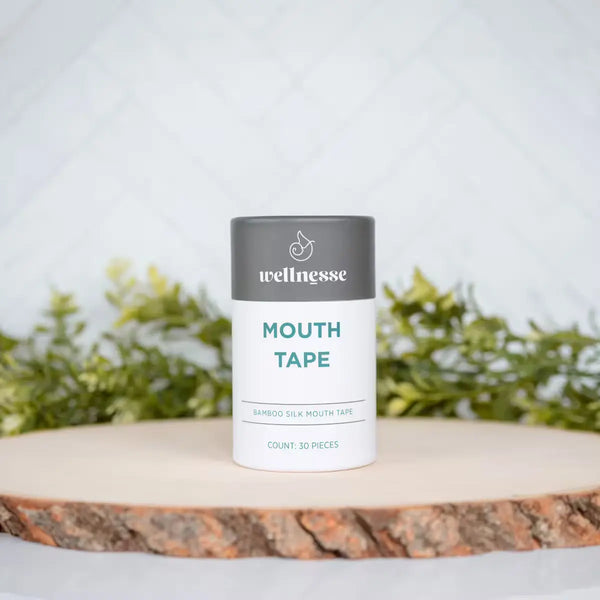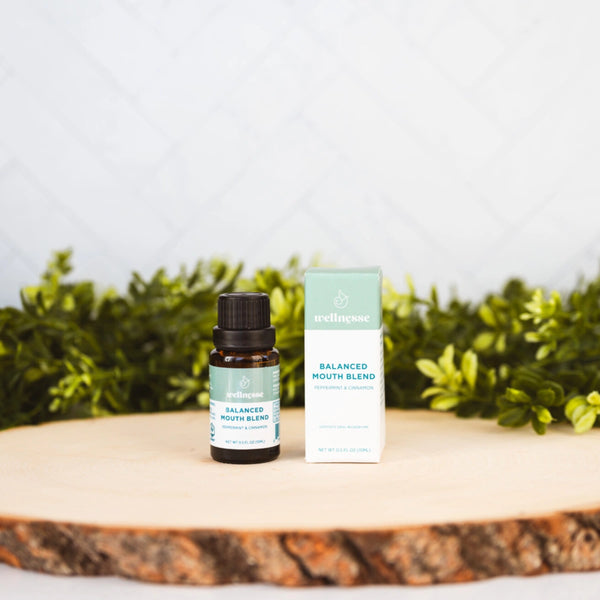The world of oral care can be confusing and, quite frankly, a little conflicting.
A trip down the oral care aisle at the local grocery store is often overwhelming… there’s so many products to choose from that promise fresh breath and no cavities. Floating all around the internet and social media are differing opinions about taking care of our teeth, what works, and what doesn’t. Then there are larger issues like cavities, gum disease, and tooth decay.
All this information can leave you feeling unsure of what to do, especially if you’re interested in natural and holistic oral care.
So what’s the real deal when it comes to oral care? This post will answer some of the most commonly asked questions about oral hygiene and caring for your mouth naturally.
FAQ About Dental Health: 5 Common Questions Answered
Here are the answers to some common questions about cavities, fillings, oral care products, and more.
1. Can you reverse a cavity?
The ultimate goal is to create an oral care routine that helps us avoid cavities from forming in the first place. But if you have a cavity, never fear… it’s possible to repair it!
Just like our bones, our teeth can heal themselves. As long as a cavity isn’t too deep, you can repair the damage. Cavities are holes in the enamel of our teeth and make it down to the dentin. This happens when your teeth have been demineralized (or stripped of their natural minerals).
To heal a cavity, you’ll want to follow a specific oral care protocol. Not only will you need to take really good care of your teeth but you’ll also want to follow a diet that encourages remineralization. Remineralization is the process where new minerals create new chains of crystals and fill back in the cavities. Pretty cool, huh?
When working to remineralize your teeth, make sure you’re brushing and flossing daily.
No specific food causes cavities, not even sugar. It’s the bacteria that feeds on sugar that produces acid that burrows through the tooth and creates a cavity. For your diet, focus on whole foods, like grass-fed, pasture-raised protein, vitamin-rich fruits and vegetables, and healthy fats like coconut and olive oil and avocados. Avoid foods with phytic acid, an acid that reduces the absorption of nutrients. This includes grains, seeds, nuts, and legumes. If you are going to eat these foods, make sure you prepare them properly to reduce the phytic acid (soak grains, nuts, and seeds, soak legumes and cook in a pressure cooker).
When choosing oral care products to help remineralize your teeth, don’t just use any products. Using toothpaste with micro-hydroxyapatite can help fill in the cracks and crevices in your enamel. Your teeth are made of hydroxyapatite, so best to use a toothpaste that has it. Our Wellnesse Whitening Toothpaste contains micro-hydroxyapatite to remineralize your teeth.
Pro Tip - After brushing with our hydroxyapatite toothpaste, do not rinse or spit. Allowing the hydroxyapatite to sit within your mouth and on your teeth will allow it to penetrate and strengthen your teeth.
And a healthy mouthwash helps create a healthy oral microbiome, which is important to balance good and bad bacteria in your mouth.
In addition, the acidity of your mouth impacts remineralization. Your teeth are always in a state of remineralization or demineralization and it’s dependent on the pH of your mouth and your saliva content. Staying hydrated will help your mouth remain alkaline and help with saliva production.
2. What's the deal with mouthwash?
The mouthwash aisle in the grocery store is full of a rainbow of choices! And while they look pretty, most are terrible for your oral health. All of the beautiful colors mean there are artificial dyes and sweeteners added to make them more "desirable". While the purple or teal colors are pretty, they’re not natural and offer no benefit to your oral health.
In addition, conventional mouthwashes often contain alcohol, which can dry out your mouth and impact the pH of your mouth. Alcohol can also deplete certain components of the mucosal line of your mouth and disrupt the oral microbiome. Maintaining a healthy microbiome is important to both oral health and overall health.
Instead choose a natural mouthwash that uses the power of essential oils and other natural ingredients that promote a healthy mouth! You can make your own or use our Balanced Mouth Blend. Just mix a few drops with water and swish!
If you have a bacterial overgrowth or infection, an antiseptic mouthwash can be prescribed by a dentist. But ask if this type of mouthwash will negatively impact other aspects of your oral health. Don't be afraid to have a conversation with your dentist. They’re your partner in your oral health.
3. If I have a mercury filling, do I need to have it removed?
Mercury fillings, also known as amalgam fillings, are still used as a low-cost option in the United States. Unfortunately, they aren’t a good option, and you’ll want to ask for a different type of filling (if you aren’t able to remineralize a cavity). But, if you have one that you got years ago and are wondering about removing it, it's best to check with your dentist first. Most dentists recommend leaving it in and not disrupting it if it’s intact and if there aren’t any health concerns.
However, if it’s cracked or damaged or impacting your overall health, they might recommend removing it. If you do need to have a mercury filling removed, make sure to use a dentist who uses the Safe Mercury Amalgam Removal Technique (SMART) to minimize your exposure to mercury. You can learn more about SMART here and also search for a dentist near you that is certified.
If you have fillings that contain mercury, one tip is to avoid thick gum or hard candy as these can disrupt the filling and release some of the mercury. In addition, a filling can off gas when heated or rubbed. Someone who’s healthy has an easier time detoxing the mercury from their body. But if you have compromised health or are pregnant, you might have a harder time clearing the mercury. Mercury can go into the brain, kidneys, and negatively impacts the gut and has been linked to sleep issues and chronic fatigue.
4. What can we learn about oral health from our ancestors?
Our ancestors didn’t have access to modern dentistry… they didn’t have toothbrushes or 6 month dental check-ups. Yet they often had straight teeth and no cavities. What were the habits of the hunters and gatherers that kept their teeth in good health?
Weston A. Price was a dentist who researched indigenous cultures throughout the world and their habits to discover the differences. What he found was that these people didn’t eat processed foods, like we do now. Processed foods change the biochemistry in our mouths. A diet heavy in processed foods leads to poor dental health.
Because of the sub-standard quality of these processed foods, we’re missing key nutrients in our diet, and this impacts both our oral and overall health. There was one nutrient Weston A. Price found that indigenous people had that we don’t get much of that was impactful to oral health. He didn’t know the name of this vitamin at the time and called it Activator X. Now we know it as Vitamin K2.
In our modern diet, we’re getting less vitamin K2 (and vitamin D3). As a result, our bones and teeth are becoming brittle and unhealthy. Vitamin K2 is one of 4 fat-soluble vitamins. Vitamin K2 has at least 7-8 key functions in the body. It makes our bones denser by redirecting minerals like calcium and vitamin D into the areas they should be, like bones and teeth. It also helps with joint health and neuropathy. Vitamin K2 regulates the production of cytokines, which can help fight gum inflammation. This vitamin is also important for blood clotting.
If your diet does not have enough K2, consider supplementing with a high-quality brand.
5. What’s the difference between micro-hydroxyapatite and nano-hydroxyapatite? Which one is better?
Hydroxyapatite is a mineral that’s the main component of both our teeth and bones. It makes up approximately 70% of our hard tissues and 90% of our teeth. Using toothpaste with this ingredient will strengthen teeth and help remineralize them. It’s used as an alternative to fluoride in natural toothpastes. There are two kinds of hydroxyapatite used in toothpastes, nano and micro, but only one of them is natural.
Many toothpaste brands use nano-hydroxyapatite. These brands feel that the smaller the hydroxyapatite particle, the better it can get into the cracks in your teeth to help strengthen them. However, nano-hydroxyapatite is synthetic and not natural. In fact, the EU banned the use of nano-hydroxyapatite in cosmetics because these particles are so small that they could cross the blood/brain barrier and accumulate in organs and parts of the body. Smaller is not always better in this case.
To us, that feels like too big of a risk for a very small reward. At Wellnesse, we do our research and avoid any synthetic material in our toothpaste and only choose ingredients that will support your overall health. Because of this, we use naturally-sourced micro-hydroxyapatite sourced from mines in France. It’s small enough to fix the cracks and crevices in teeth without the potential to accumulate in the body and have a negative impact.
Micro-hydroxyapatite has ALL the benefits with none of the dangerous downsides like nano-hydroxyapatite.
Next Steps
Hopefully this Q&A helps clear up some of the common questions you might have about natural oral care. In a world of lots of information, it’s important to do your research to support your and your family’s health. If you’re looking for natural care products for your family, Wellnesse has a full line of natural options that actually work! You can check them out here.
